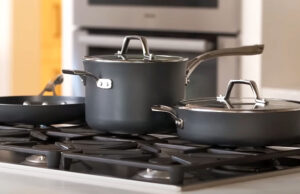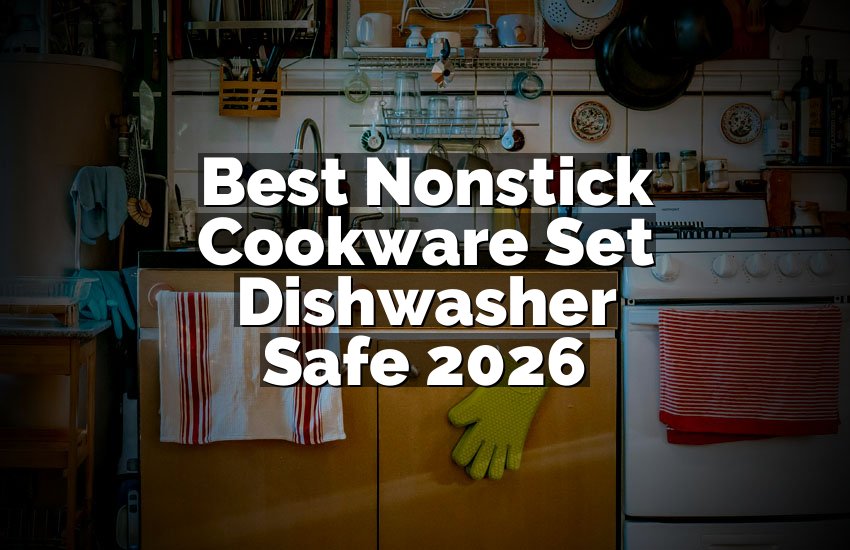As an Amazon Associate, I earn from qualifying purchases at no extra cost to you.
Are Dishwasher Dimensions Standard? Avoid This Mistake!
You might be wondering if dishwasher sizes are the same everywhere. If you’ve ever tried to buy a dishwasher and struggled to fit it in your kitchen space, you’re not alone. You want to know if dishwasher dimensions are standard so you don’t end up with one that doesn’t fit.
The good news is, most dishwashers come in common sizes, but there are also many exceptions. In this article, you will learn everything about dishwasher dimensions, what sizes to expect, and how to choose the right one for your kitchen.
Understanding Common Dishwasher Sizes
Dishwashers usually come in a few common sizes to fit most kitchen spaces. The most typical dishwasher size is about 24 inches wide, 24 inches deep, and 35 inches tall. This size works for most kitchens and fits well under standard kitchen counters. However, there are also smaller dishwashers called compact dishwashers, which are usually around 18 inches wide. These are great if you have a small kitchen or limited space.
Knowing the common sizes helps you plan your kitchen better. Most kitchens are built to fit these standard dishwashers, so you don’t have to worry too much about finding a dishwasher that fits. But, it is still very important to measure your kitchen space carefully before buying.
Dishwasher depth is another important size to consider. The depth means how far the dishwasher will stick out from the wall. Standard dishwashers usually have a depth of around 24 inches, but some models may be deeper or shallower. This can affect how much space you have in your kitchen walkway.
Height is also important. Most dishwashers are about 35 inches tall, so they fit under counters easily. But if your counters are shorter or higher, you may want to check the height before buying. Some dishwashers have adjustable legs to help with this.
- Most dishwashers are 24 inches wide, 24 inches deep, and 35 inches tall.
- Compact dishwashers are smaller, about 18 inches wide.
- Kitchen counters are usually made to fit standard dishwasher sizes.
- Measuring your space is very important before buying.
- Depth affects how far the dishwasher sticks out.
- Height usually fits under standard counters but check just in case.
Why Dishwasher Sizes Vary and What That Means for You
Even though many dishwashers have standard sizes, not all dishwashers are the same. Different brands and models can have small differences in size. Sometimes, special dishwashers for tight spaces or fancy models with extra features will be bigger or smaller.
If your kitchen has a unique design, you might need to look for a dishwasher that fits exactly. Some kitchens have very narrow or wide spaces, and the dishwasher needs to match that. You should always check the exact measurements on the dishwasher label or website before buying.
Size differences can also come from the type of dishwasher. Built-in dishwashers usually have standard sizes, but portable dishwashers or drawer dishwashers can be very different. Portable dishwashers are on wheels and can be moved, so they might be smaller or have different shapes.
The space around your dishwasher is important too. You want to leave room for the door to open fully and for ventilation. Sometimes, a dishwasher that fits the space might still be hard to use if it’s too close to walls or cabinets.
- Sizes can change depending on brand and model.
- Some dishwashers are made for special spaces.
- Always check exact measurements before buying.
- Built-in dishwashers tend to be standard sized.
- Portable and drawer dishwashers vary more.
- Leave enough space around the dishwasher for the door and air.
How to Measure Your Kitchen Space for a Dishwasher
Measuring your kitchen space for a dishwasher is very important. You don’t want to buy a dishwasher that is too big or too small. To measure, start by finding the spot where you want the dishwasher to go.
First, measure the width of the space from one side to the other. Use a tape measure and write down the number in inches. Make sure to measure at the top, middle, and bottom because sometimes the space is not the same everywhere.
Next, measure the depth of the space. This means from the front edge to the back wall. Again, measure in a few spots to be sure. Keep in mind that dishwashers need a little extra space behind them for hoses and power cords.
Finally, measure the height of the space from the floor to the bottom of the counter or cabinet above. Most dishwashers are about 35 inches tall, but if your counters are shorter, you will need a dishwasher with adjustable legs or a smaller model.
Don’t forget to think about the door. You need to have enough space for the dishwasher door to open fully without hitting anything. Measure the space in front of the dishwasher spot too.
- Measure the width from side to side carefully.
- Check width at top, middle, and bottom.
- Measure depth from front edge to back wall.
- Leave space behind for hoses and cords.
- Measure height from floor to counter.
- Make sure dishwasher door can open fully.
- Write down all measurements clearly.
Types of Dishwashers and Their Size Differences
There are several types of dishwashers, and each can have different sizes. Knowing the type of dishwasher you want helps you find the right size for your kitchen.
Built-in dishwashers are the most common. These fit under your kitchen counter and usually have standard sizes around 24 inches wide. They are connected to your plumbing and stay in one place.
Portable dishwashers are on wheels and can be moved around. They are usually smaller than built-in ones and are a good choice if you don’t have space for a built-in dishwasher. They might be around 18 to 24 inches wide but can be deeper or taller because of the design.
Drawer dishwashers are special dishwashers that look like drawers. They come in single or double drawer styles. These are smaller and can fit into tight spaces, but they do not hold as many dishes. Drawer dishwashers are often about 24 inches wide but less deep and tall than standard models.
Countertop dishwashers are very small and sit on your kitchen counter. These are usually for very small spaces or people who don’t wash many dishes. They are much smaller than all other types.
- Built-in dishwashers are most common and usually 24 inches wide.
- Portable dishwashers are smaller and on wheels.
- Drawer dishwashers come in single or double drawers.
- Countertop dishwashers are very small and sit on counters.
- Each type has different size needs and fits differently.
How to Choose the Right Dishwasher Size for Your Kitchen
Choosing the right dishwasher size depends on your kitchen space and your needs. First, look at your measurements to see what will fit. If you have a small kitchen, you might want a compact or drawer dishwasher. If you have plenty of space, a standard built-in dishwasher will work best.
Think about how many dishes you usually wash. If you cook and eat at home a lot, a bigger dishwasher can save you time. If you live alone or have a small family, a smaller dishwasher might be enough.
Also, think about where the dishwasher will go. If it’s near your sink, it will be easier to use. Make sure the dishwasher size fits with the cabinets and does not block doors or drawers.
Remember to check the dishwasher’s features too. Sometimes a bigger dishwasher has more racks or special holders for pots and pans. This can make washing dishes easier.
- Use your measurements to find the best fit.
- Bigger dishwashers are good for big families.
- Smaller dishwashers work for small kitchens or fewer dishes.
- Check dishwasher location near sink and cabinets.
- Make sure dishwasher fits without blocking anything.
- Look at features to match your needs.
Tips for Installing and Adjusting Dishwasher Size
Installing a dishwasher needs care, especially with size. If your dishwasher is too big or too small, it can cause problems.
Before installation, double-check all your measurements. The dishwasher should fit snugly but not be forced into the space. If it is too tight, it can damage your cabinets or dishwasher.
Most dishwashers have adjustable legs. These let you change the height so the dishwasher fits under the counter perfectly. Use a level tool to make sure the dishwasher is even. This helps the dishwasher work well and avoids leaks.
Make sure there is enough space behind the dishwasher for hoses and power cords. Sometimes you might need to move plumbing or electrical outlets to fit the dishwasher properly.
Finally, test the dishwasher after installation. Open and close the door to see if it fits well. Run a quick wash cycle to check for leaks or noise.
- Double-check all measurements before installing.
- Dishwasher should fit without forcing.
- Use adjustable legs to fit height.
- Use a level to keep dishwasher even.
- Leave space for hoses and cords behind.
- Move plumbing or outlets if needed.
- Test dishwasher after installation for leaks and fit.
Final Thoughts
Dishwasher sizes are mostly standard but not always the same. Knowing the common sizes and types helps you pick one that fits your kitchen perfectly. Always measure carefully and think about your needs before buying. Choosing the right size dishwasher makes your kitchen work better and saves you from many problems. Whether you want a big built-in dishwasher or a small compact one, the key is to match it with your space and lifestyle.
Frequently Asked Questions (FAQs)
Is it important to measure my kitchen space before buying a dishwasher?
Yes, measuring your kitchen space is very important. Without measuring, you might buy a dishwasher that is too big or too small for your kitchen. This can cause problems when installing or using it. Measuring width, depth, and height helps you choose a dishwasher that fits well and works properly.
Can all dishwashers fit under a standard kitchen counter?
Not all dishwashers fit under every kitchen counter. Most built-in dishwashers fit under standard counters about 35 inches tall. But some counters might be shorter or have space limits. If your counter is not standard height, you may need a dishwasher with adjustable legs or a smaller model.
Do I need special tools to install a dishwasher?
You don’t need many special tools to install a dishwasher, but some tools help. A level tool is useful to make sure the dishwasher sits evenly. You might also need a screwdriver, wrench, and tape measure. If you are not comfortable with plumbing or electrical work, hiring a professional is a good idea.
Is it better to buy a compact dishwasher for a small kitchen?
Compact dishwashers are great for small kitchens because they take less space. They usually are about 18 inches wide and fit well in tight spots. But they hold fewer dishes, so if you wash many dishes, a compact dishwasher might not be enough.
Can I use a portable dishwasher instead of a built-in one?
Yes, you can use a portable dishwasher. Portable dishwashers are on wheels and do not need to be installed permanently. They are good for kitchens without built-in space or if you move often. They can be a bit bigger or smaller but offer flexibility.
Do dishwasher dimensions include the door when open?
Dishwasher dimensions usually include the size with the door closed. When the door is open, you need extra space in front of the dishwasher. This space is important to open the door fully and load or unload dishes comfortably.
Is it possible to adjust the height of most dishwashers?
Most dishwashers come with adjustable legs that let you change the height. This helps the dishwasher fit under counters that might be a little higher or lower than standard. Adjusting the height also helps keep the dishwasher level to avoid leaks or noise.
Can I install a dishwasher myself or should I hire a professional?
You can install a dishwasher yourself if you have basic tools and knowledge of plumbing and electricity. But if you are not sure, hiring a professional is safer. A pro will ensure the dishwasher fits well, connects properly, and works without problems.




